With so many interesting facts and hidden secrets held within our member venues, it's amazing what you can learn about London's diverse and fascinating history. You can discover a Roman Amphitheatre, venues that were war time hospitals and headquarters, historic courtrooms, futuristic buildings, venues that contain decorative mosaics, a historic lecture theatre that has seen many amazing discoveries and venues that have experienced tears, triumph, bloodshed and bears! Here are just a few examples to help you imagine where you might hold your next event.
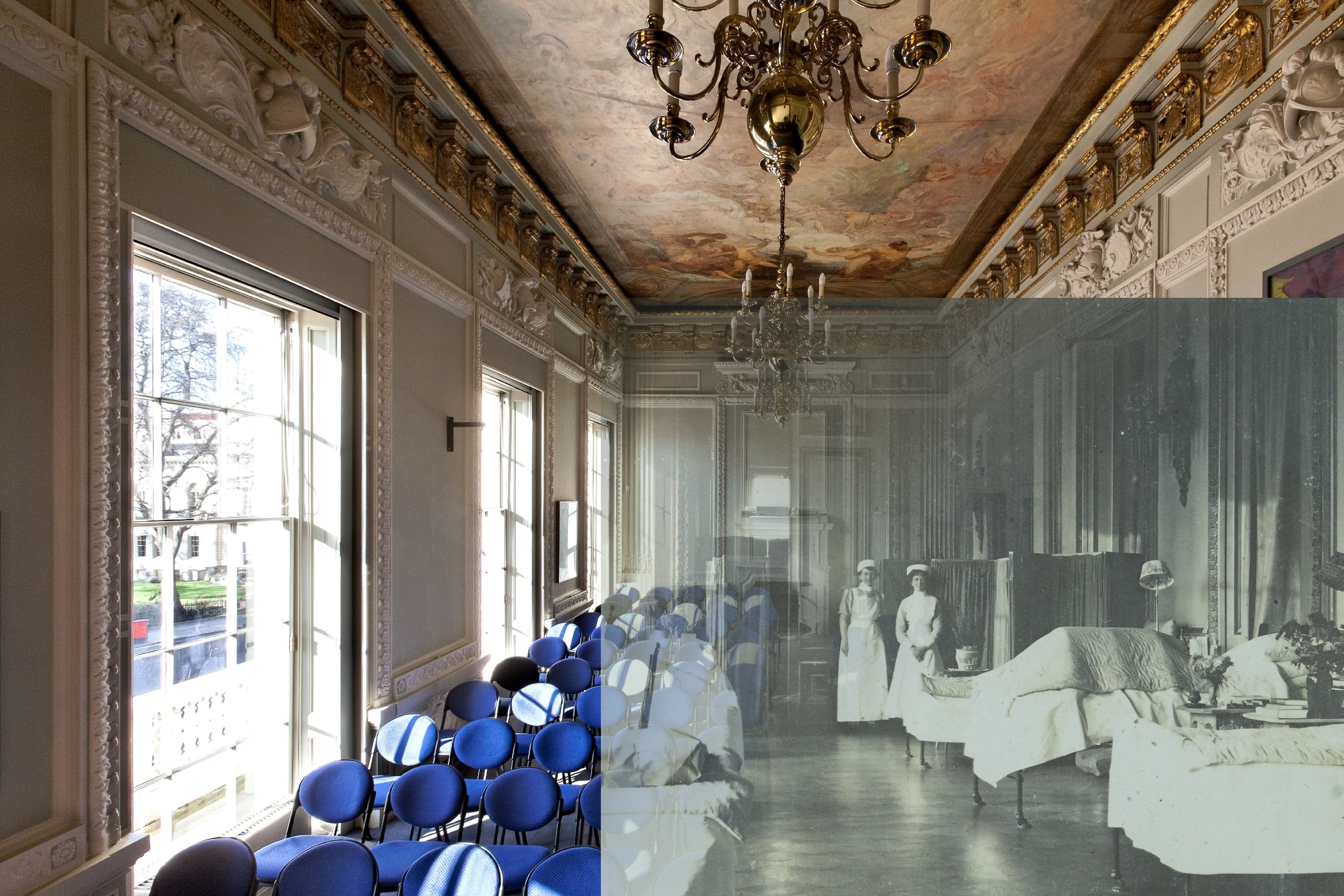
At the outbreak of the first world war, Lady Ridley (former resident of 10 Carlton House Terrace) began turning parts of the house into a hospital for injured officers. Drawing rooms became wards and the library was emptied of its books, becoming an operating theatre. Meanwhile a shanty town of wooden huts was knocked up on the terrace, for officers who'd been afflicted by gas attacks, and needed the fresh air. Lady Ridley liked to 'entertain' the officers with her piano playing. The officers weren't so keen.
In truth, they were much more enamoured by one of the young nurses - Aileen Maunsell, better known as 'Dinkie' (so-called because of her size). The officers adored her, at least a couple of them pulling out the stops and proposing (she later married one). Dinkie also kept a diary which not only gave a strong sense of what it was like living in central London during the first world war, it makes a wonderful read — what with its adolescent use of nicknames and exclamation marks!!
To learn more about 10-11 Carlton House Terrace contact the events team: info@10-11cht.co.uk
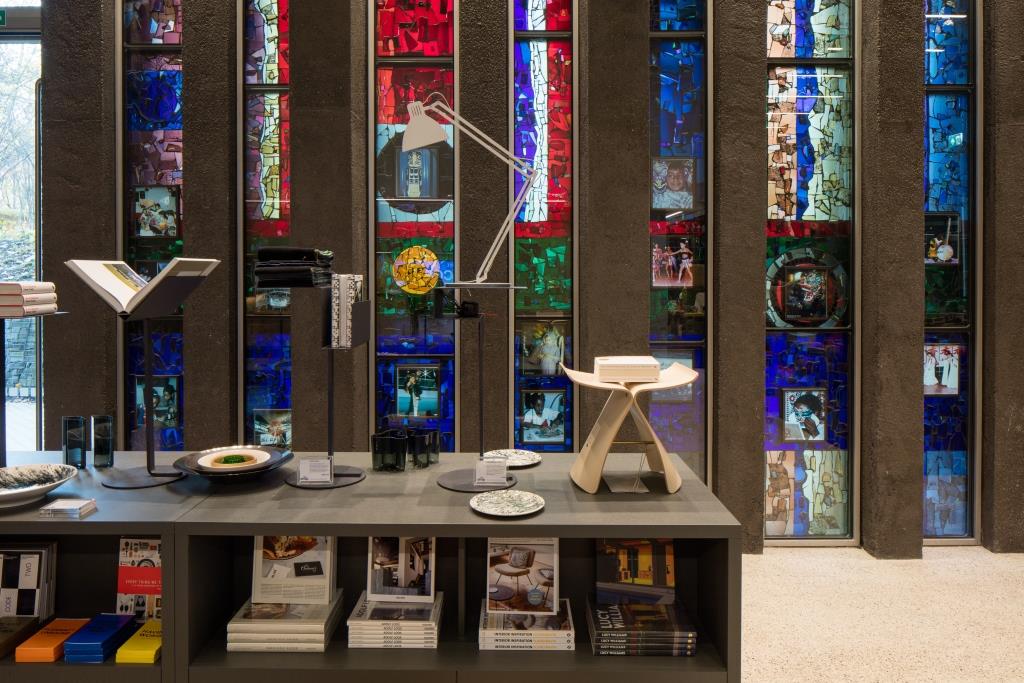
Image credit: Luke Hayes
Prior to becoming the Design Museum, this iconic building was previously home to the Commonwealth Institute for 42 years. Reminders of its former life are hidden throughout our event spaces - including the marble floor’s transformation into the sleek mezzanine wall, Keith New’s stunning stained glass in the Atrium shop and the original 1960s commonwealth wall map outside the Bakala Auditorium.
The most prominent remnant is the Grade II listed hyperbolic parabaloid roof which provides a stunning backdrop to a wide variety of events large and small.
Contact the events team now at venuehire@designmuseum.org to find out more.
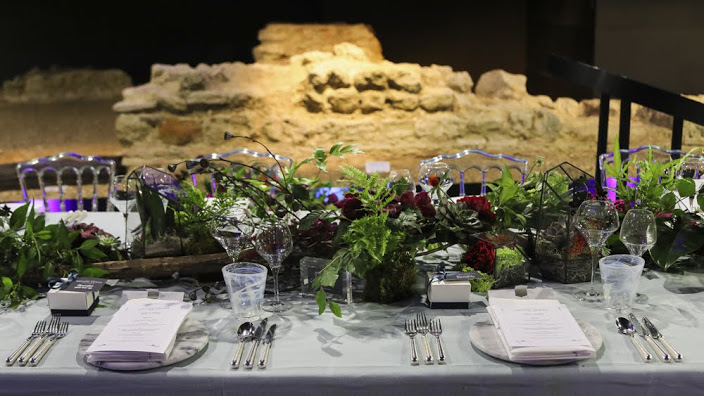
Image credit: Matt Chung
Discovered in 1988 during restoration works on the Guildhall Art Gallery, Guildhall’s Roman Amphitheatre is a treasure trove of interesting, secret and hidden facts.
Dating back 2,000 years to the height of Londinium the Roman Amphitheatre was a cornerstone of civic life. Once rediscovered it opened to the public in 2002 as a museum and then in 2017 as an event space.
You do not need to look too hard to find a wealth of interesting and intriguing historical facts. From the original wooden drainage system and timber and stone walls to the clearly marked rooms at the entrance to the arena, one of which was used by the gladiators and the other to house animals, the space is a treasure trove of historical facts and stories.
The variety of artefacts found during the excavation, some of which are on display in the Art Gallery, give a fascinating insight in to Roman London life. It truly is a step back in time.
To learn more about the Guildhall please contact the events team: Guildhall.events@cityoflondon.gov.uk
Honourable Society of Lincoln’s Inn
The Old Hall – “If walls could talk”
The eleven-acre estate of The Honourable Society of Lincoln’s Inn dates back before the 1400s. It is the oldest Inn of Court so, as you can imagine, has quite an illustrious history!
The Inn’s oldest surviving building is the Old Hall, which was built around 1490. Just like it is today, it was used by the Inn for eating, drinking and debating. The Old Hall has witnessed many events, the most notable being a visit by Charles II in 1672. The King dined in the Old Hall, along with numerous noblemen and courtiers of the day.
The Old Hall was also used as a courtroom from 1717 until the Royal Courts of Justice on the Strand opened in 1882. It was this use of the Old Hall during the nineteenth century that led to it being featured in Charles Dickens’ Bleak House.
The Old Hall has undergone various remodelling since 1490; notably so that in 1790 the impressive medieval timber roof was ‘lost’ for 200 years after a plaster ceiling that was added in 1720. It was rediscovered and reinstated in the 1920s.
Every inch of the Inn comes with a fascinating story to tell; we often say if the walls could talk…..
To learn more about the Honourable Society of Lincoln’s Inn please contact the events team: events@lincolnsinn.org.uk
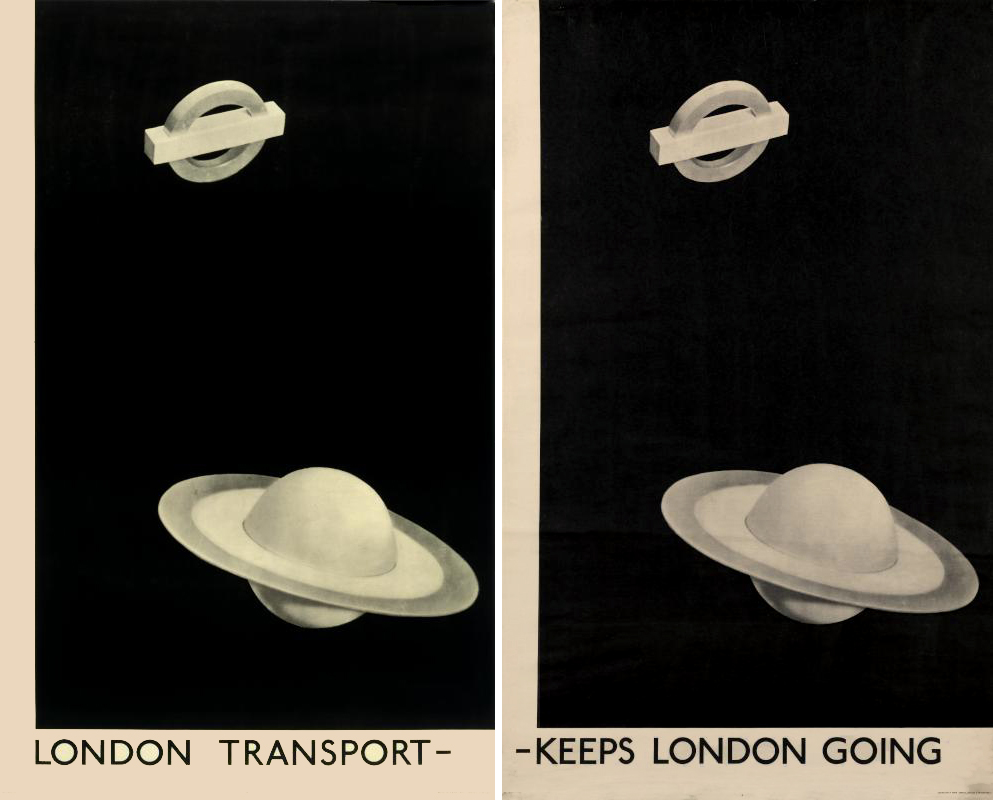
London Transport Museum in Covent Garden is filled with fascinating objects that tell the story of London’s world-famous transport system. What many don’t know is that the bulk of the Museum’s collection is stored at its Depot in Acton Town, which is filled with some of the Museum’s more unusual objects, including…
- A cake celebrating the Victoria line’s 10th anniversary, from 1979. Beaten only by a London Transport Catering produced Christmas pudding…from 1975!
- A bewitching original London Underground poster from 1938 designed by famous American artist, Man Ray, titled ‘London Transport – keeps London going’
- A model featuring a one-legged man from the 1900s descending an escalator. The scene depicts the tale of Bumper Harris, hired by London Underground to ride the escalators when they first went into operation at Earl’s Court station in 1911 in a bid to reassure the public that the strange moving staircase was perfectly safe!
To learn more about the London Transport Museum and holding events at their venue contact: corphire@ltmuseum.co.uk
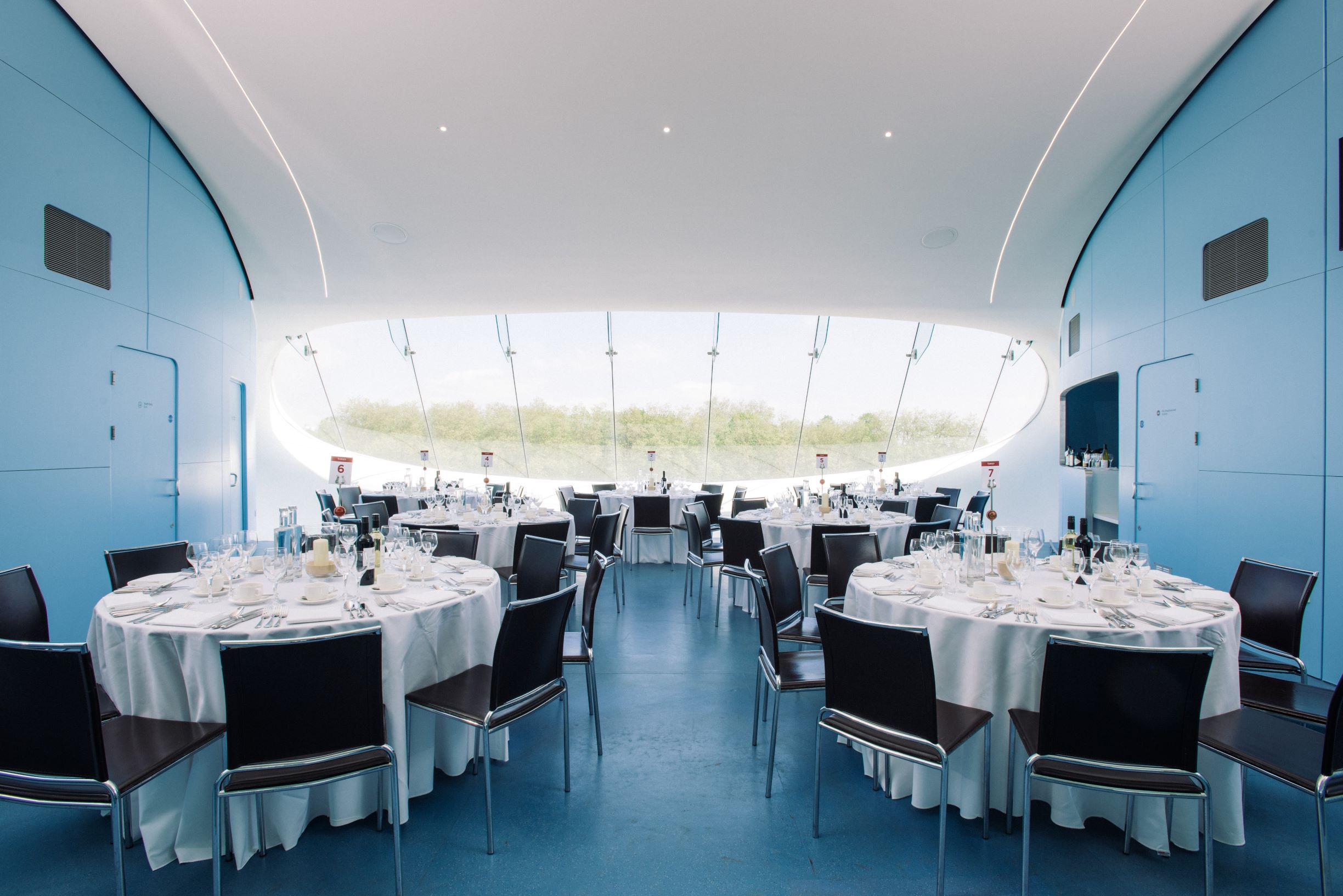
Lord’s Cricket Ground in London, is steeped in over two hundred years of history, embodied in the Grade-II*-listed Pavilion building. Opposite this iconic building however, sits the futuristic J.P. Morgan Media Centre, which has a surprising nautical connection!
Constructed in a shipyard in Cornwall in 32 sections, it was officially opened in time for the 1999 Cricket World Cup. Since then the J.P. Morgan Media Centre has won a number of architectural awards for its innovative and original design, and boasts outstanding views over the hallowed turf. These views are enjoyed by journalists and broadcasters on match days, who could not be sat in a better place for the duration of a match at Lord’s.
When not being used by journalists, the J.P. Morgan Media Centre is a unique venue to host a range of events. The desks usually occupied by press is a perfect space to hold a conference with views of the Pavilion, while the dining area looks back over the Nursery Ground, which is ideal for drinks receptions.
For more information on the J.P Morgan Media Centre please visit our www.lords.org/lords/conferences-and-events/jp-morgan-media-centre
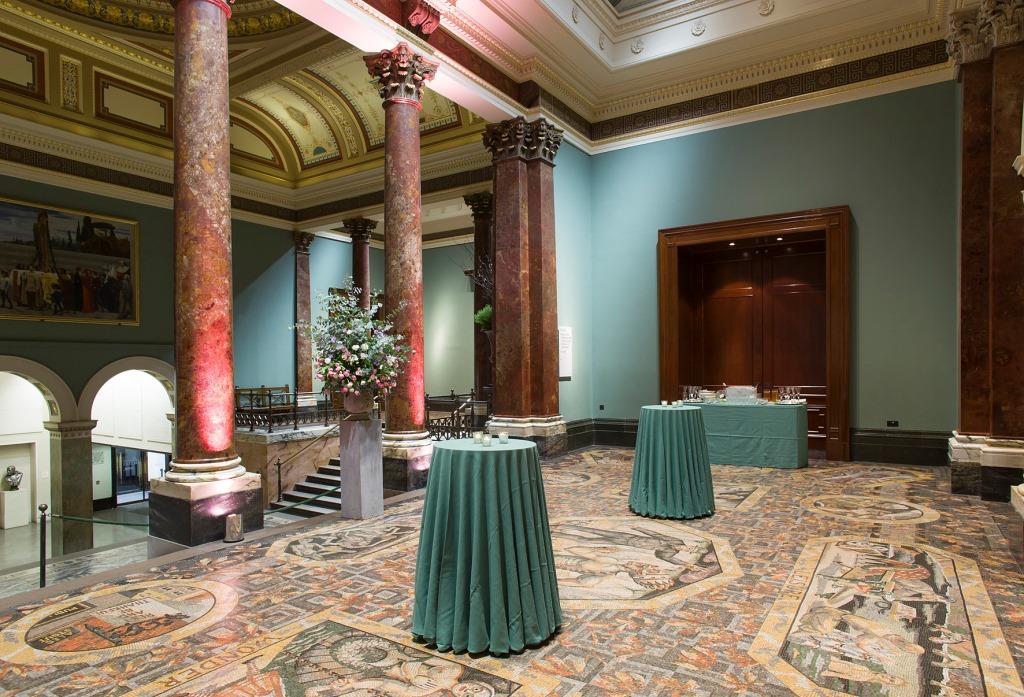
Image credit: Boris Anrep 1883 – 1969, Vestibule Mosaics 1926-52, Mosaic
The National Gallery’s Mosaic Terrace
When visitors enter the National Gallery, the first piece of artwork can be found beneath their feet. The Anrep mosaics, 1933, are a vibrant floor mosaic inspired by pavement artists found on Trafalgar Square – who are still there today!
Most of the mosaics were created piece by piece by Russian designer, Boris Anrep. However, he also employed the help of his friends, fellow Russian refugees and together they blended ancient mosaic techniques with contemporary subject matters. They included images of eminent public figures in the mosaic, including Churchill and Bertrand Russell, as well as humorous images of their favourite things, like a Christmas Pudding.
Anrep spent a whopping 25 years on the project! When he wasn’t designing and laying the tiles, he was competing in the men’s doubles at Wimbledon. The Anrep mosaics represent determination, as we well as art, in its purest form.
For more information about the National Gallery, please contact the events team: venuehire@ng-london.org.uk
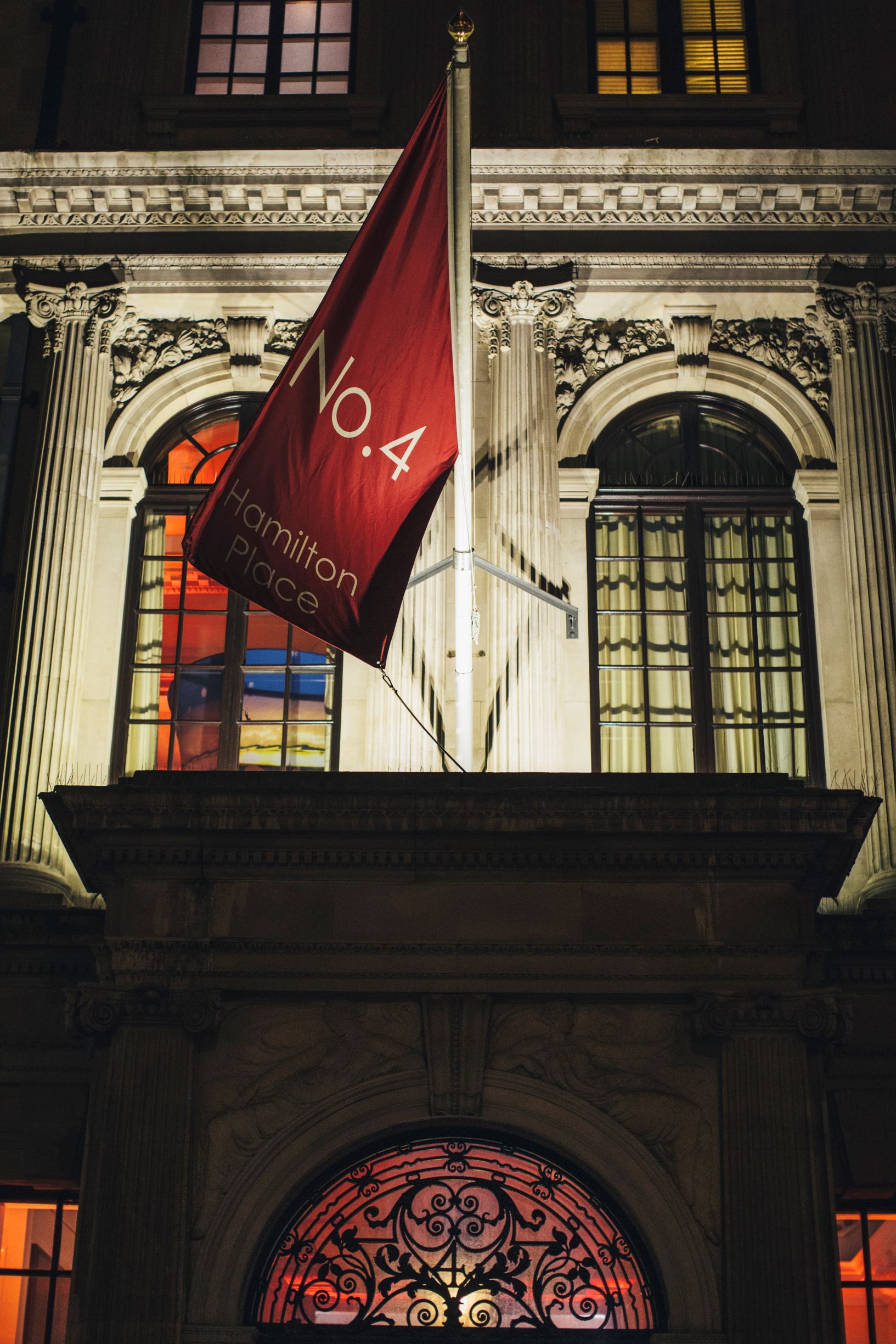
Image Credit: Ferla Paolo Photography
Since 1810, No.4 Hamilton Place has been home to a variety of residents, including the Duke Of Wellington, Lord Granville and the then Viceroy of India, Lord Northbrook. The last private owner of No.4 Hamilton Place was Leopold Albu who took over the lease of No.4 Hamilton Place in 1903. Rather than spend money on renovating the now slightly run-down building, he chose to entirely re-build it. Four years later, the new building was completed at a total build cost of £50,000. He chose to decorate all of the rooms in the stunning Louis XVI style – details which guests today can still enjoy in many of the rooms.
Mr Albu’s death in 1938 gave way for the current tenants at No.4 to acquire the lease, which in 1939 was taken over by The Royal Aeronautical Society (RAeS). The Argyll Room’s sympathetic restoration caught the eye of location scouts for Downtown Abbey and the space was used as the Embassy Club in an episode of the TV series.
To learn more about No.4 Hamilton Place contact the events team hello@4hp.org.uk
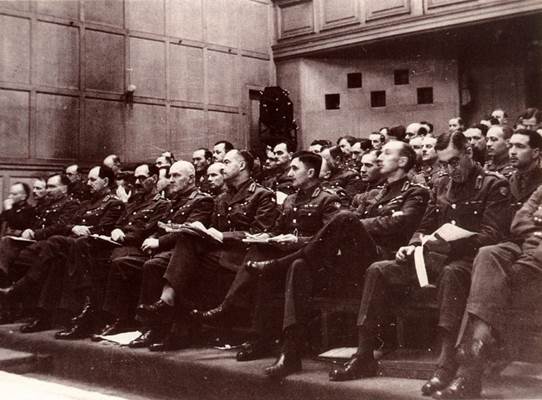
One Birdcage Walk was officially opened as the headquarters for the Institution of Mechanical Engineers in May 1899.
At the outbreak of the Second World War, One Birdcage Walk was used by the local headquarters in the war effort. The entrance and roof was sandbagged, and the windows netted. The basement had been turned into day and night air raid shelters.
During this time, OBW acted as a meeting place not just for the Institution, but for other bodies from Allied forces as well. Government departments also made use of the building, and in January 1943, a group of senior Royal Electrical and Mechanical Engineers used the building to plan the mechanical engineering support for Operation Overlord and the invasion of Normandy (D-Day).
For more information on One Birdcage Walk please contact the events team: enquiries@onebirdcagewalk.com
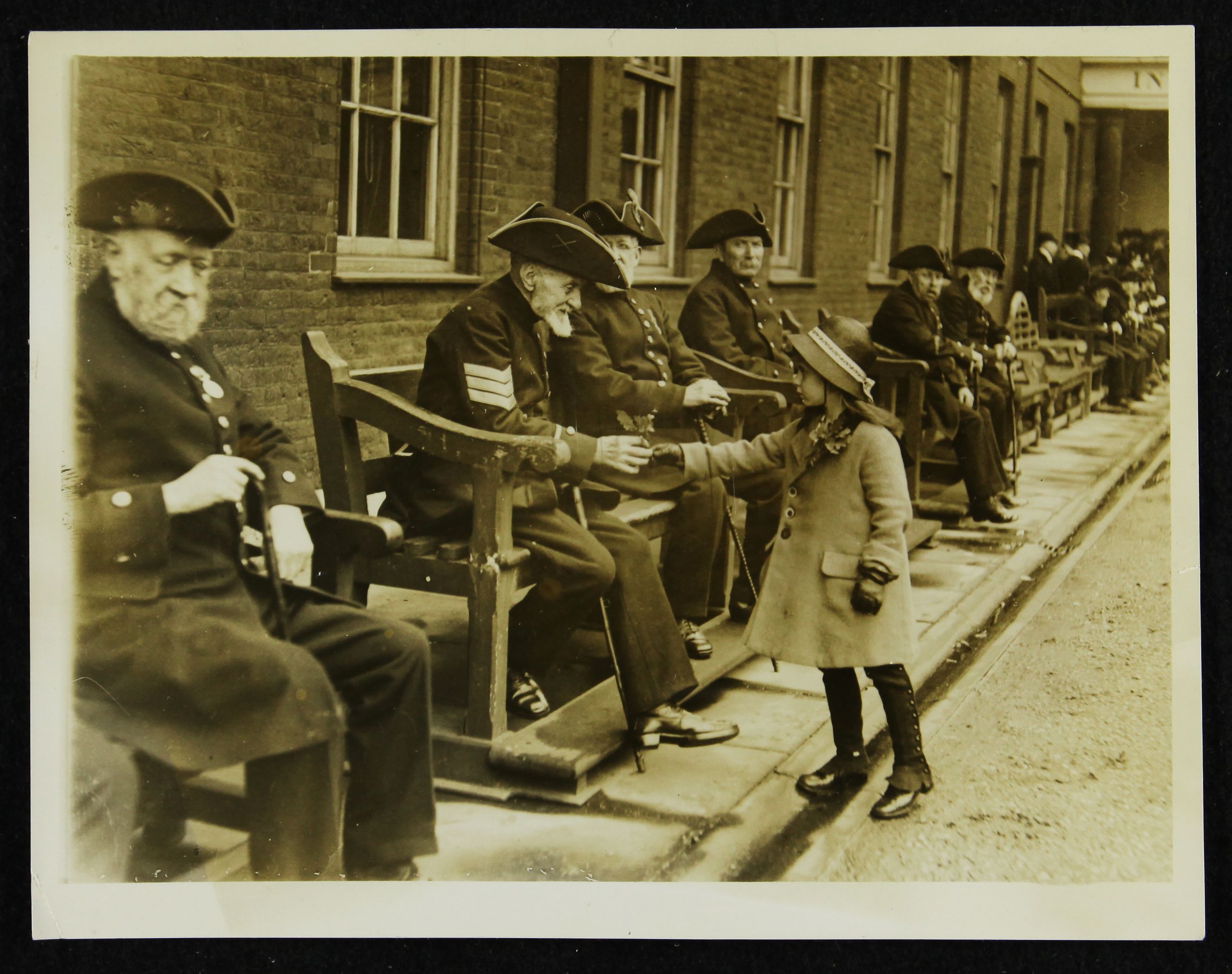
The Secret History of The Royal Hospital Chelsea - What could be more British than the image of a Chelsea Pensioner? Although, actually the Royal Hospital was actually an idea copied from the French; Charles II was inspired by the ‘Les Invalides’ in Paris, and so the first veteran soldiers to be residents of the Royal Hospital Chelsea were veterans of the English Civil War.
The Hospital is the site of many different kinds of events, from intimate weddings to The Chelsea Flower Show but perhaps the longest running annual event is the ceremony of the Christmas cheeses, which has been an annual event for 300 years. A ceremonial sword is used to cut a giant cheese which is then distributed amongst the pensioners. Slightly more recently, in 1949, the Ceremony of Christmas Cake started, which is similar to the cheese ceremony but with cake – and represents the friendship between the UK and Australia….of course.
Finally, contrary to popular belief it is actually not illegal to impersonate a Chelsea Pensioner, although it is probably a bit strange.
To learn more about The Royal Hospital Chelsea please contact the events team: RHCevents@chelsea-pensioners.org.uk
The Royal Institution of Great Britain
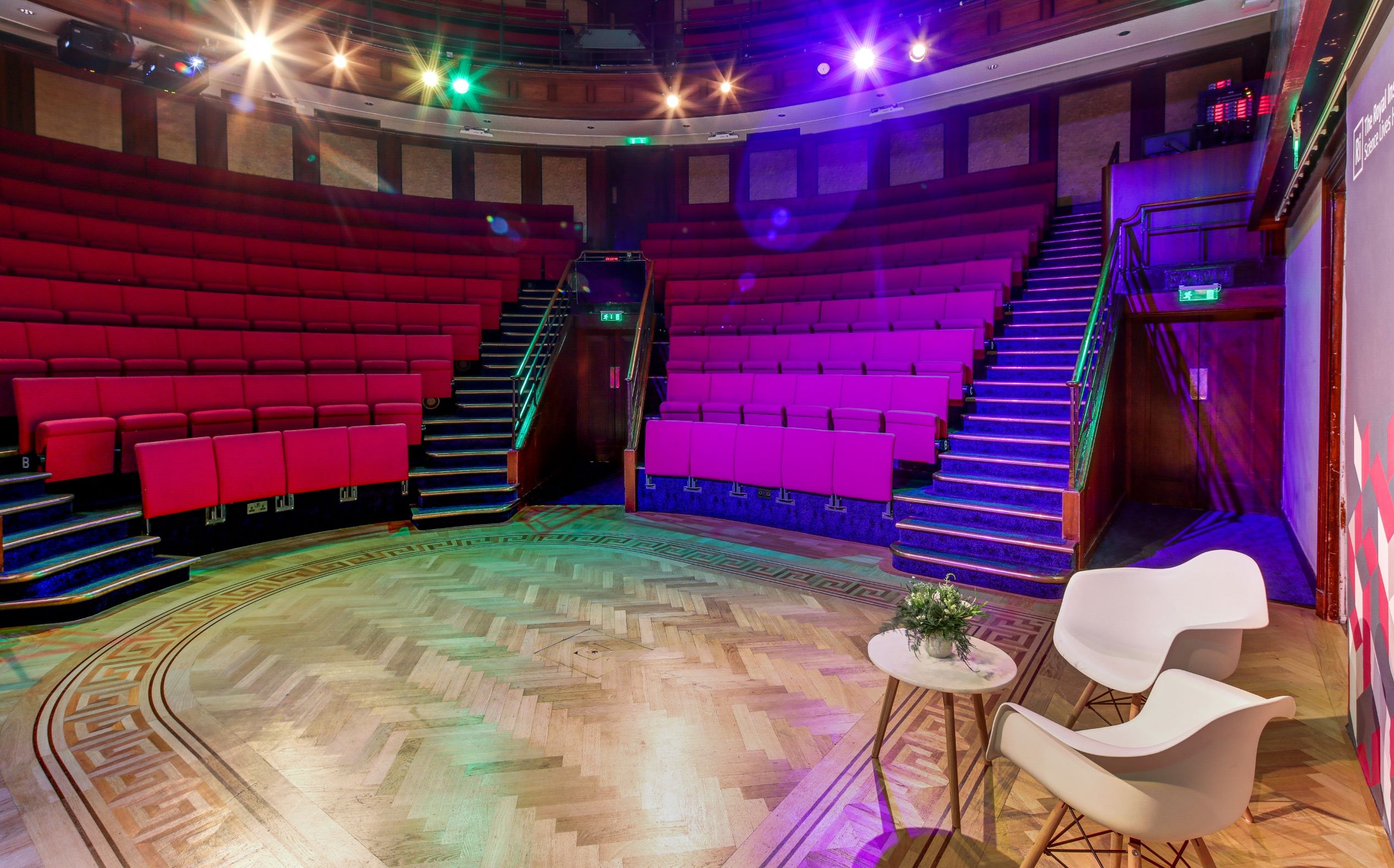
Image credit: Matt Chung
The Royal Institution’s historic lecture theatre has seen many amazing discoveries. The theatre where the electron was announced, where colour photography was first shown and where Michael Faraday first demonstrated electromagnetism.
The first electric light bulb was demonstrated by Joseph Swan in 1881, William Fox Talbot announced the development of a fixed image, photography, in 1837 with a display of images in the library.
Over 25,000 lectures have been delivered in Ri the Lecture Theatre over the last 200 years, albeit with a few adjustments to the space along the way.
To learn more about The Royal Institution of Great Britain contact: venuehire@ri.ac.uk
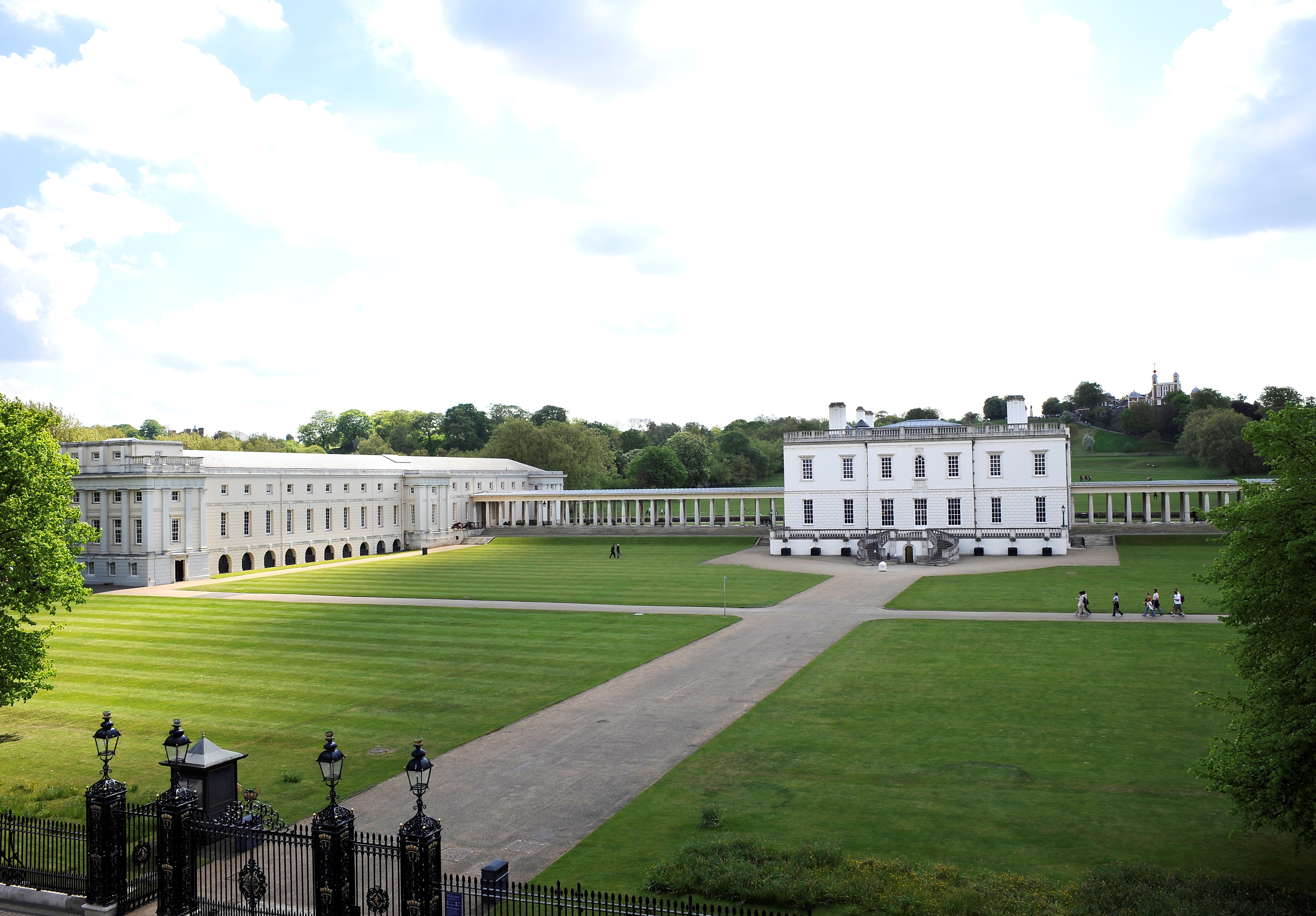
With five museums and situated on royal ground dating back to the 14th century, Royal Museums Greenwich has enough secret facts to fill the pages of a whole book. Whether you are interested in their ghost stories from the Queen’s House, their historic collection of telescopes including a real Camera Obscura at the Royal Observatory or the beloved collection of figureheads at Cutty Sark that are often the only remnants of their long since gone ships, they’ve got something for every interest.
One thing you may not know is that the lawns in front of the Queen’s House are the archeologically protected site of King Henry VIII’s famous tiltyard at Greenwich Palace, particularly important as the location where Queen Anne Boleyn was arrested. Protected by a Scheduled Monument Agreement and even featured on Time Team, these lawns play host to a range of filming and events nowadays including Greenwich Comedy Festival and Netflix’s Bridgerton.
Reach out to events@rmg.co.uk to discover how the Events Team can match their secrets to your next event.
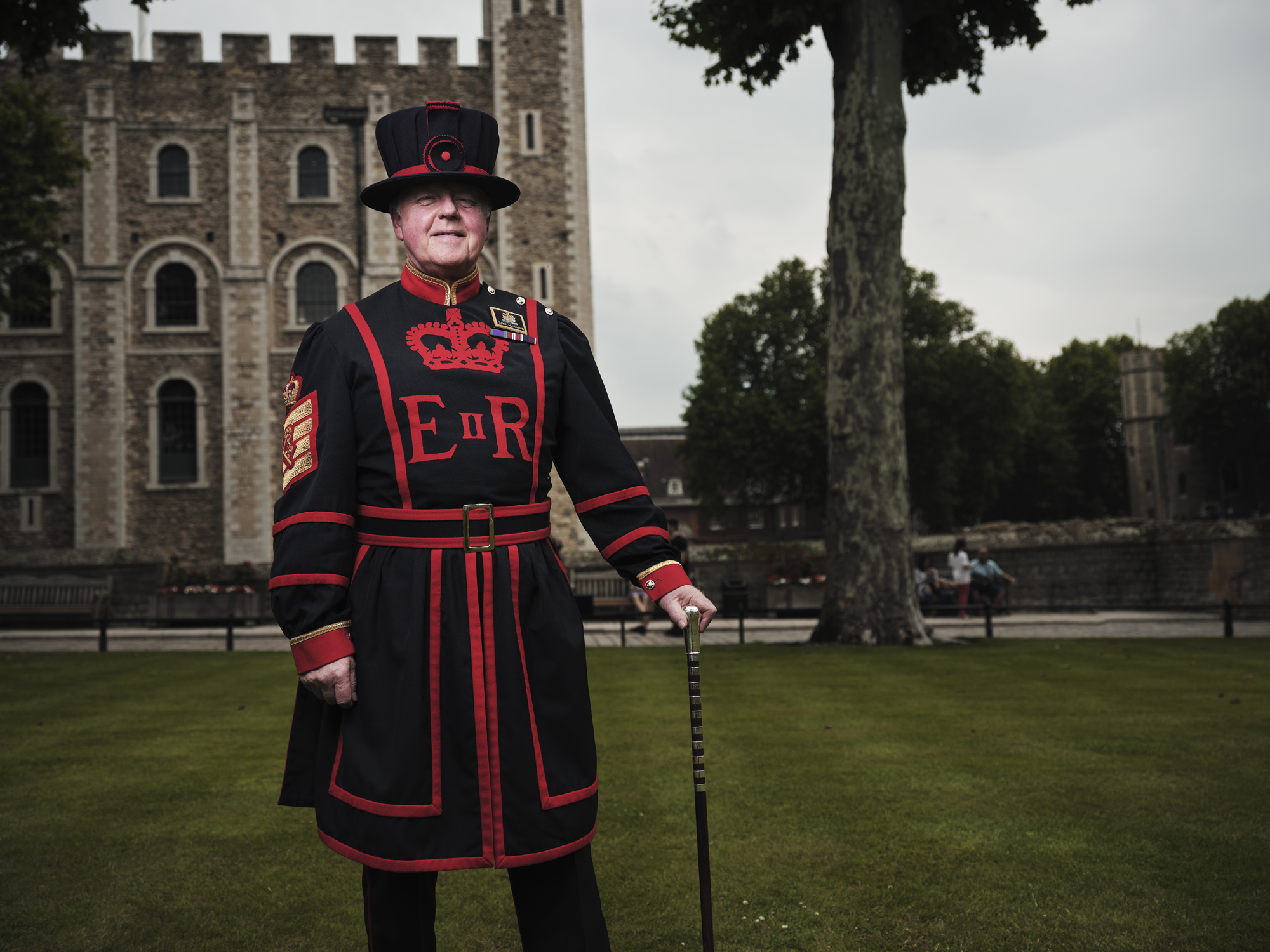
The Tower of London has a long and dramatic history, complete with tears, triumph, bloodshed and bears, and certainly many secrets!
We can’t reveal too much about this famous fortress, but one thing we can let slip is it's not as bloody as you think, contrary to popular belief, there were only 7 beheadings in the inner ward of the Tower, this was reserved for those most senior in society.
You can discover more about the Tower on the “Secrets of the Tower Tour”, an exclusive behind-the-scenes glimpse of life (and death) at the Tower, all guided by a Yeoman Warder.
We like to keep the route shrouded in mystery, however we can say you will be entering out-of-bounds areas, including St Thomas More cell where he was held for over a year before his execution, and the Chapel Crypt with the memorial to St Thomas More - you’ll get under the skin of this ancient fortress and discover the secrets that lurk beneath the surface.
For more information on the “Secrets of the Tower Tour”, or other available tours at the Tower of London, please contact the events team: toweroflondonevents@hrp.org.uk
Within the precincts of Westminster Abbey, hidden away above Dean’s Yard, is the truly unique Cheyneygates – the perfect space for a private dinner, intimate drinks reception or off-site meeting. Taking its name from the French word chene, meaning oak, the two-room suite originally formed part of the Abbot’s house complex within the Abbey in the 14th Century and has been graced by Kings and Queens throughout history.
Cheyneygates was once the home of Edward IV’s queen Elizabeth Woodville and was the birthplace of her son, Edward V – who, along with his brother Richard, would become one of the ill-fated “Princes in the Tower”. Henry VII often dined here with Abbot Islip and it was also here in Cheyneygates that Sir Thomas More was held in custody before his removal to the Tower.
Accessed from within the Abbey’s Cloisters, the space accommodates up to 36 guests for a seated dinner or 60 for a standing drinks reception.
To learn more about Westminster Abbey please contact the Corporate Events Team: Bookings@westminster-abbey.org
